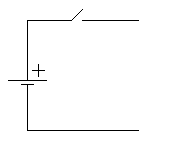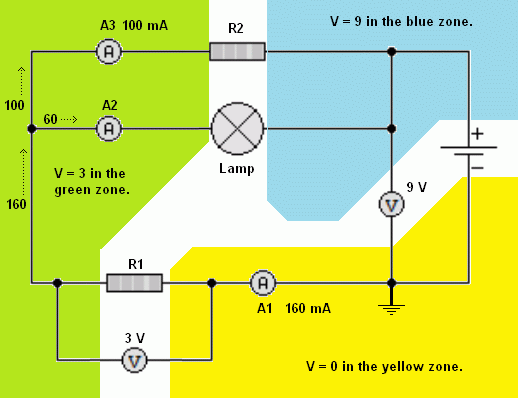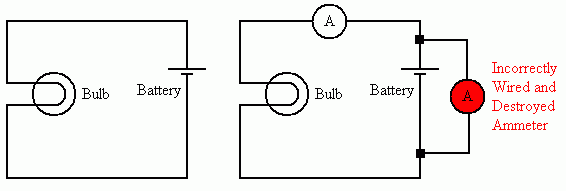

Measuring Current |
|
To gain access to revision questions, please sign up and log in.
a
In a conductor, a current is a net flow of electrons. For a current to flow, there must be ...


Kirchoff's Current Law.
At a junction, the number of electrons ( amps ) entering the junction is equal to the number of electrons leaving the junction. This is just like cars at road junctions.
In this diagram, 160mA flows through the battery and A1. At the junction, 100mA goes up and you can work out that 60mA turns right.
Kirchoff's Voltage Law.
The sum of the voltages round a closed loop is equal to sum of the battery or power supply voltages.
In this example, across R1 there is 3 V and across R2 there is 6 V.
3 V + 6 V = 9 V
The battery voltage is 9 V so the rule applies to this circuit.
CORRECTHow the experts do it!
|
WRONGHow the twonks do it!
Twonk is also the noise made by the pointer in an analogue ammeter smashing itself against the end stop shortly before the meter burns out. |
The ammeter must be placed in SERIES with the component who's current needs to be measured.
Break the circuit by removing a wire and replace the wire with the ammeter. In this way, the current flows through the ammeter and can be measured.

 |
Many beginners play multimeter roulette. If they are lucky, they only blow the fuse inside the meter. It is also possible to destroy the meter. To play this game,
You are most likely to destroy the meter when trying to measure current. Remember that the current you are measuring must flow through the meter.
|
reviseOmatic V3 Contacts, ©, Cookies, Data Protection and Disclaimers Hosted at linode.com, London